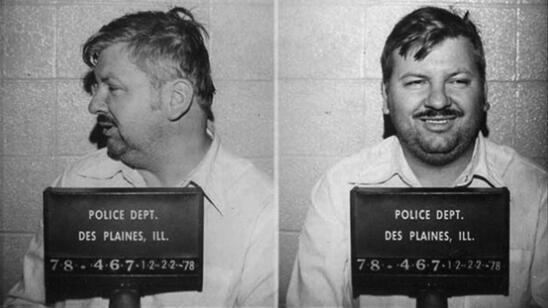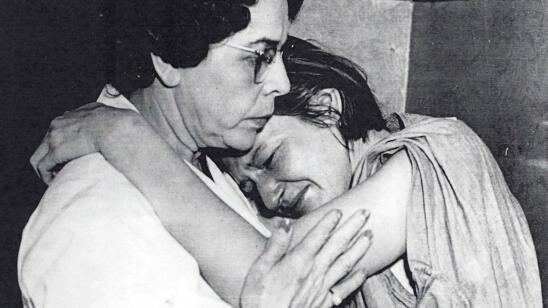After Amanda Stott-Smith’s husband Jason left her to fend for herself and her three children, the woman sank deep into despair. On May 23, 2009, in the middle of the night, Stott-Smith dropped two of her children—Trinity, 7, and Eldon, 4—off the Sellwood Bridge in Portland, Oregon. A couple heard the children screaming and pulled them out of the water.
Tragically, Eldon did not survive. Stott-Smith was arrested, convicted of his murder, and, on April 22, 2010, sentenced to life in prison, with the possibility of parole after 35 years.
Nancy Rommelmann’s book, “To the Bridge: A True Story of Motherhood and Murder,” explores Stott-Smith’s turbulent marriage and what led to such a horrific crime.
Excerpt reprinted courtesy of Little A.
Around seven a.m., Channel 12 Fox News in Portland reported that the Portland Police Bureau (PPB) was investigating two children found in the Willamette River. Christine Duncan heard this report and called 911. An officer on call wrote that Duncan “was sure based on the description that it was her grandchildren and was hysterical.”
At 7:45, the Tualatin Police Department received confirmation from PPB that the male child was found deceased. The female had been transported to Oregon Health and Science University and was expected to survive.
At 8:41, officers received an additional ping on Amanda’s phone.
At 8:45, Jason and Christine Duncan met Detective Michele Michaels in the downstairs lobby of Justice Center in downtown Portland. They were brought to the thirteenth floor and joined by Detective Bryan Steed. Jason and Christine Duncan were very concerned the children found in the river might be Jason’s son, Eldon, and daughter, Trinity. Jason recalled the last conversation he had with Amanda, sometime after one thirty a.m. She sounded “odd” and “said something like, ‘Help me. Help me.'” She told him, “You’ve taken all my joy away. I don’t have my kids anymore.” She accused him of having an affair with Keli Townsend. Jason told detectives Amanda had gotten angry over this issue before, to the point where she had driven to the town in which she believed Keli lived, in an effort to find her.
During this interview, the children were positively identified. A Crisis Response Team officer helped to tell Jason of the death of his son, and that his daughter was in the hospital and expected to make a full recovery. Immediately after being told of Eldon’s death, detectives received word that Amanda had been located.
Amanda had stopped her car on the ninth floor of a parking garage two blocks from Pioneer Courthouse Square. Cellphone records would show she had been there since at least five thirty a.m. She was parked nose to the wall. On street level, there was an Apple Store, a Tiffany & Company—places she might have gone to replace the computer she no longer had, a ring that in better days she had never seen. Dreams, all gone.
Around nine a.m., Officer Wade Greaves and his partner received information regarding another cell phone “ping” on the phone belonging to the mother of the children in the river. The ping was traced to Southwest Fifth Avenue and Yamhill Street in downtown Portland. The officers drove the area and located the vehicle in the top level of a parking garage a block away. Greaves radioed that he had spotted the car, a 1991 Audi. He and other officers could see there was one female in the car. He further radioed that the car door was opening and the female was exiting; she was heading for the open wall of the parking structure. Greaves and other officers ran toward her.
She climbed the wall and was over when Greaves grabbed for her. “[She] dropped off the ledge while I held her from falling by her right wrist,” Greaves wrote.
“He kept her from falling nine levels to the sidewalk,” added Lieutenant Miller, who assisted in getting the female over the wall to safety and taking her into custody. She was handcuffed and placed in a patrol vehicle. She made no statement other than to complain that the handcuffs were too tight. Miller checked.
“They were not too tight,” he wrote.
Chantel and Daryl Gardner (Amanda’s sister and brother-in-law) had been up all night, first driving around looking for Amanda, including in Washington Park, where they’d previously found her drunk and passed out in her car. They had not found Amanda, and by ten thirty a.m., they were in downtown Portland. When they were a half block from the Police Bureau, officers drove up with Amanda in custody. Chantel was newly pregnant. When she saw her sister being walked into the station, she collapsed on the sidewalk.
At 10:40 a.m., Amanda was in a Detective Division Holding Room. At 10:50, the handcuffs were removed. She was searched by Detective Michele Michaels. The log said Amanda was wearing a red floral top, size thirteen white shorts, a black belt with white stitching, and sandals. She had two one-dollar bills in her front pocket. Photographs showed “scrapes on her arms, legs and right hand,” wrote Detective Steed. Steed’s report offered no opinion as to whether the fingernails of her children might have caused the scrapes. Between 11:00 and 11:39, Amanda squatted in the corner. At 12:30, she was taken out of her cell to be interviewed.
“Her words were not slurred nor were her pupils dilated or pinpoint,” Steed wrote. “She was able to track and answer questions in an appropriate manner.” After Michaels advised Amanda of her Miranda rights, Amanda was asked about the scratches on her arms and whether she needed medical attention. Amanda said she was okay. She asked twice how the children were. Detectives told her they did not have an answer to that question.
Detectives asked what happened the night before; Amanda told them they must know.
“You can just kill me,” she said, and began to sob.
Amanda said she had “told everyone to just lock her up.” She had lost too much. She said she had told Jason to take the kids, which was “the stupidest, craziest thing she had ever done to save the marriage.” Details of what she meant by this are unknown. She said, in response to Michaels asking about what happened the previous night, “I went a little crazy.”
Amanda stressed she wanted no media attention, that she did not want to be on the news. This was at odds with (Amanda’s defense attorney) Shanon Gray’s opinion as to how lucid she might have been to make such a choice at this time. Also, by dropping her children off a bridge in a major American city, Amanda had pretty much forfeited her right to privacy.
“I hurt the children. I mean, I didn’t hurt them, I just let them [go],” Amanda told detectives. Asked where she let them go from, Amanda said, “You guys probably know.”
Related Features:
What Drives Some Women to Kill Their Kids?
Susan Smith and 6 Other Women Who Have Murdered Their Children
The ‘Killer Nanny Case’: What Drives Some Babysitters to Murder


